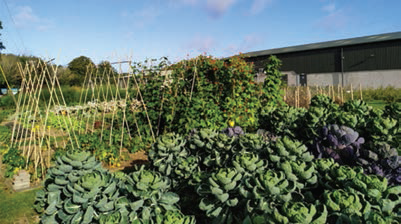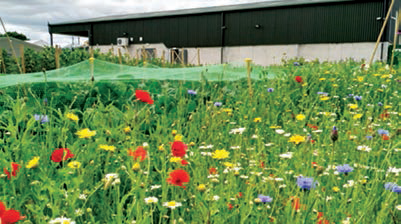


John Mulhern and the teams from Teagasc Ashtown and the National Botanic Gardens explain how investment in facilities and course offerings are really starting to show a return
September has seen a big influx of students attending first-year programmes here in the Teagasc College at the National Botanic Gardens. In total, we have over 130 students attending the first year made up of Certificate in Horticulture full time, part-time and Degree level students. This year on our certificate programme there is great interest in part-time modules like Plant Identification, Fruit and Vegetable Production, Landscape Construction, and Biodiversity and the Natural environment, which we start after Christmas.
The part-time learning mode is ideal for students to take time off work and pursue one or more modules at a time in order to achieve the full award over a few years. It’s a busy time in the college and in November we will welcome our Advanced certificate students who will be following either Nursery, landscape, turfgrass or food production streams.
The College hosted the annual Turf Science Lite event at its Ashtown campus on September 18th. This event is designed to showcase the latest research and technological innovations in turf agronomy. The overriding theme of this year’s event was integrated pest and disease management and sustainable approaches to sportsturf management. In his presentation, Henry Bechelet from ICL (UK) presented the findings from a range of trials conducted in the UK and Ireland to highlight the importance of cultural management and in particular plant nutrition in preventing plant disease infection. Mr. Daniel Lightfoot (Syngenta UK) reported on the progress of the development, registration and introduction of a new active ingredient for control of a wide range of turfgrass diseases. It is anticipated that this new product will be available in 2020 and will be a very good substitute for the three active ingredients that are being withdrawn from use in Ireland early next year. Daniel also presented an excellent demonstration of spray application techniques focussing in particular on sprayer nozzle technology, sprayer settings and water quantity. In his presentation, Dr. Andy Owen (ICL UK) focussed on the latest technologies in controlled-release fertilisers. With the ever-increasing number of controlled-release fertilisers on the market, Dr. Owen highlighted how important it was to understand the nature and of the material being used and to monitor the subsequent performance of the turfgrass after application of the fertiliser material.
In his closing address to the delegates, Colman Warde the manager of ICL in Ireland commented how important it was for everyone in the sports turf sector to keep abreast of changing technologies and how happy ICL was to showcase the wonderful turfgrass facilities at Teagasc Ashtown.
It’s been a busy season in the Teagasc Ashtown fruit and vegetable garden, which saw the installation of a new layout within the fruit and vegetable garden. Our QQI Level 5 fruit and vegetable production students and level seven degree students were the powerhouse behind the installation of the fruit and vegetable garden which greatly enhances the learning resources and experience of our current and prospective students.
The fruit and vegetable garden comprises of ten steel-edged beds measuring 14m x 4m. These beds allow the students to implement a rotation system with each bed planted with various crops. The beds are further enhanced using drifts of annual wildflowers enticing beneficial insects into the garden and crops to target problematic pests. This strengthens our ethos of incorporating best practices in sustainable food production and integrated pest management, both of which are vitally important to meet the growing requirements of progressive food industry. The garden also contains a mixed orchard of apples, plums, pears, mulberries, cherries, and a large fruit area consisting of redcurrants, blackcurrants, gooseberries, raspberries and blueberries. This allows students to progress and develop their practical skills such as sowing, planting, crop husbandry, pruning and plant identification.
Further plans for the fruit and vegetable garden include the installation of a composting area demonstrating to student’s best practice in waste management. This will be complemented by the installation of a rain harvesting system allowing students to focus on the use of natural resources and their importance within sustainable food production. These current principles have been the driving force in this year’s current increase in full and part-time students studying our level 5 fruit and vegetable production module. It’s fantastic to be able to facilitate the growing number of students in our fruit and vegetable garden where they are responsible for the crops grown throughout the seasons and the produce they harvest in an environment that is conscious of current concerns, topics and trends.
The use of technology is also incorporated in the ongoing development of the fruit and vegetable garden in Ashtown. The introduction of a data logger that can monitor 12 various sensors concurrently is ideal for irrigation and fertigation programmes allowing students to position multiple sensors in prime cropping locations, whether indoor or outdoor. Students monitor an array of variables such as moisture levels, light levels and soil temperature which are all prudent to a successful cropping system. This information can be downloaded directly from the data logger on to the students PC’s allowing them to dissect the relevant information on the importance of implementing precision controllers which leads to improved yield and quality products in an efficient and cost-effective manner. ✽










